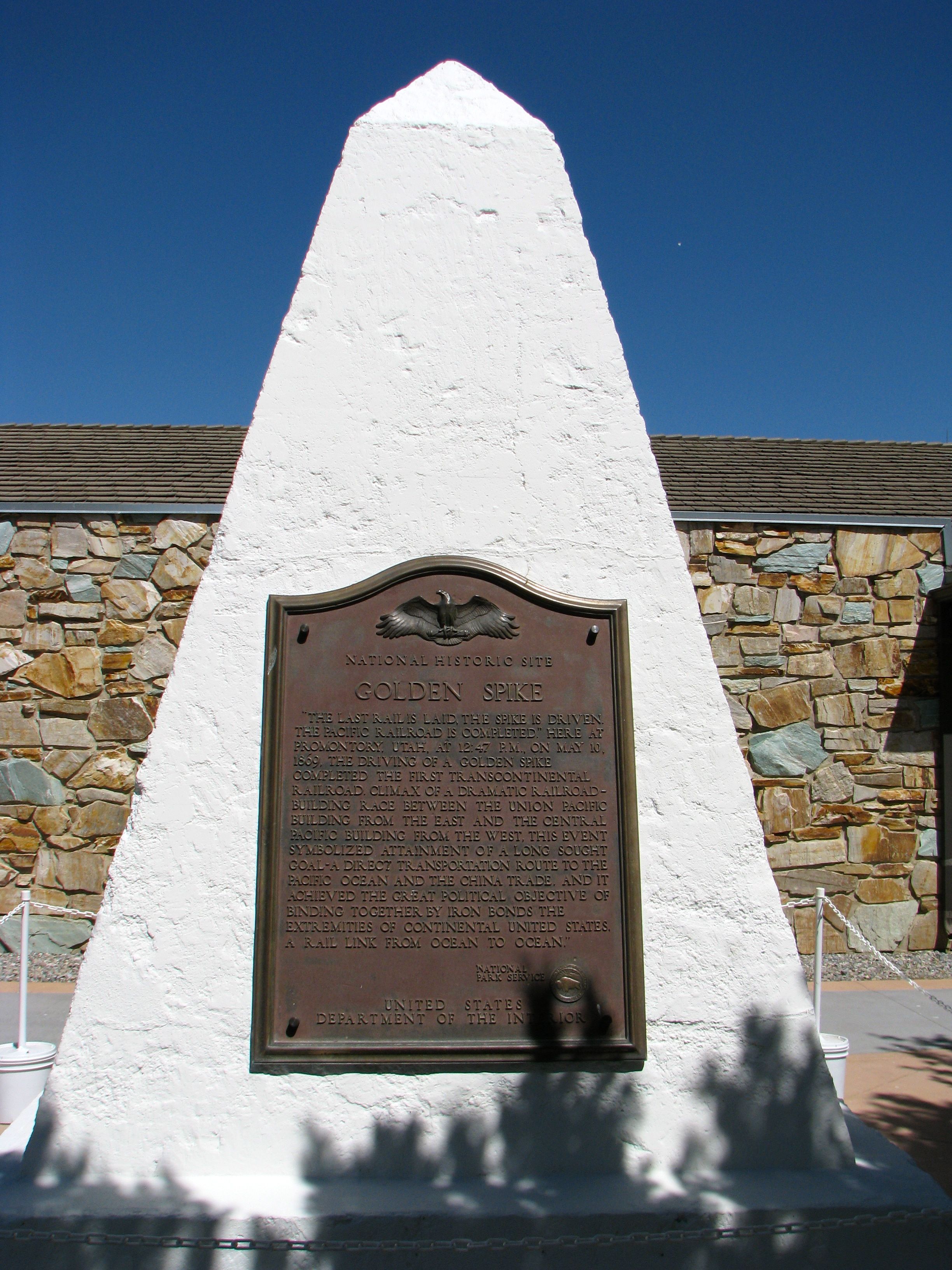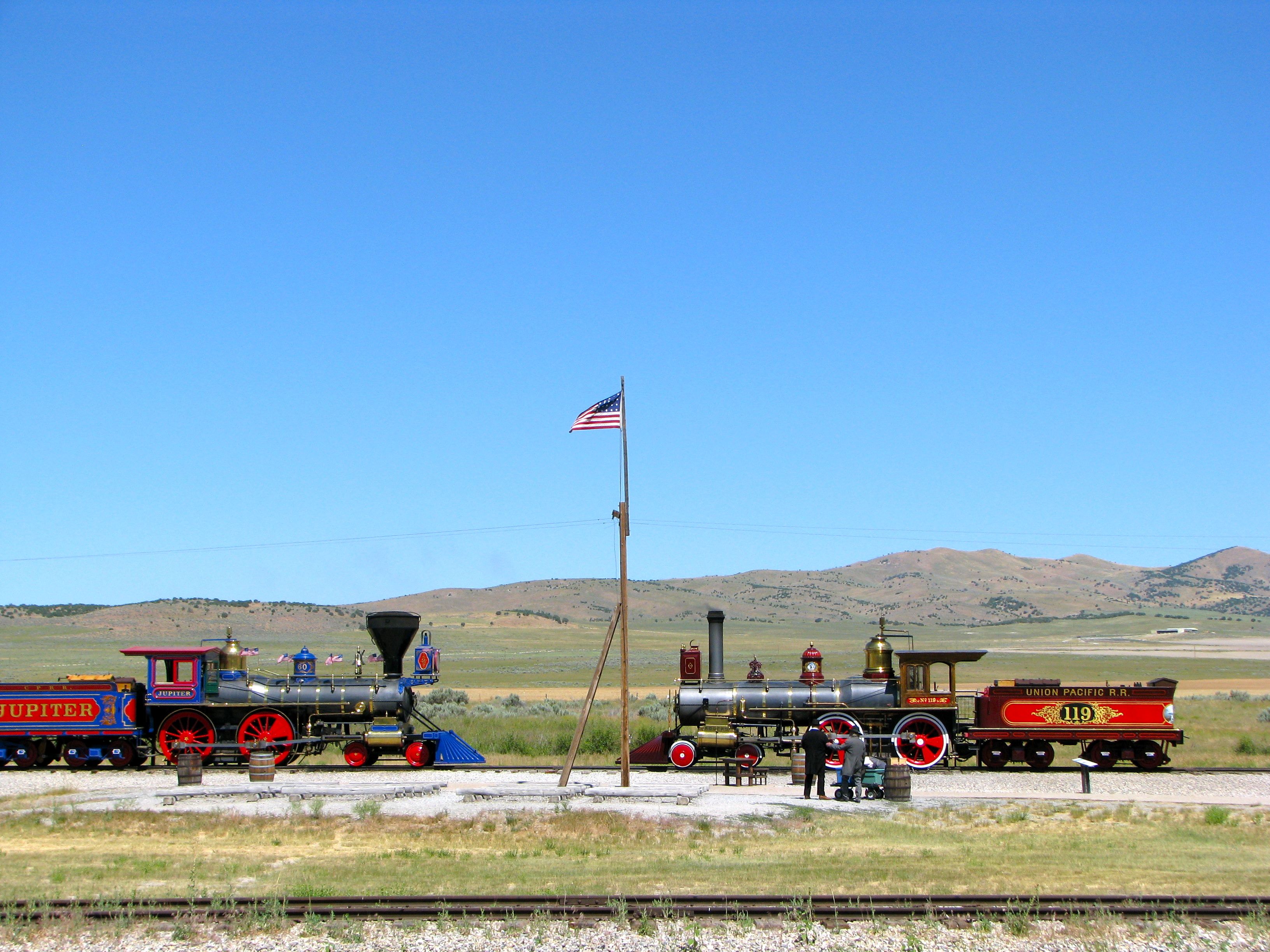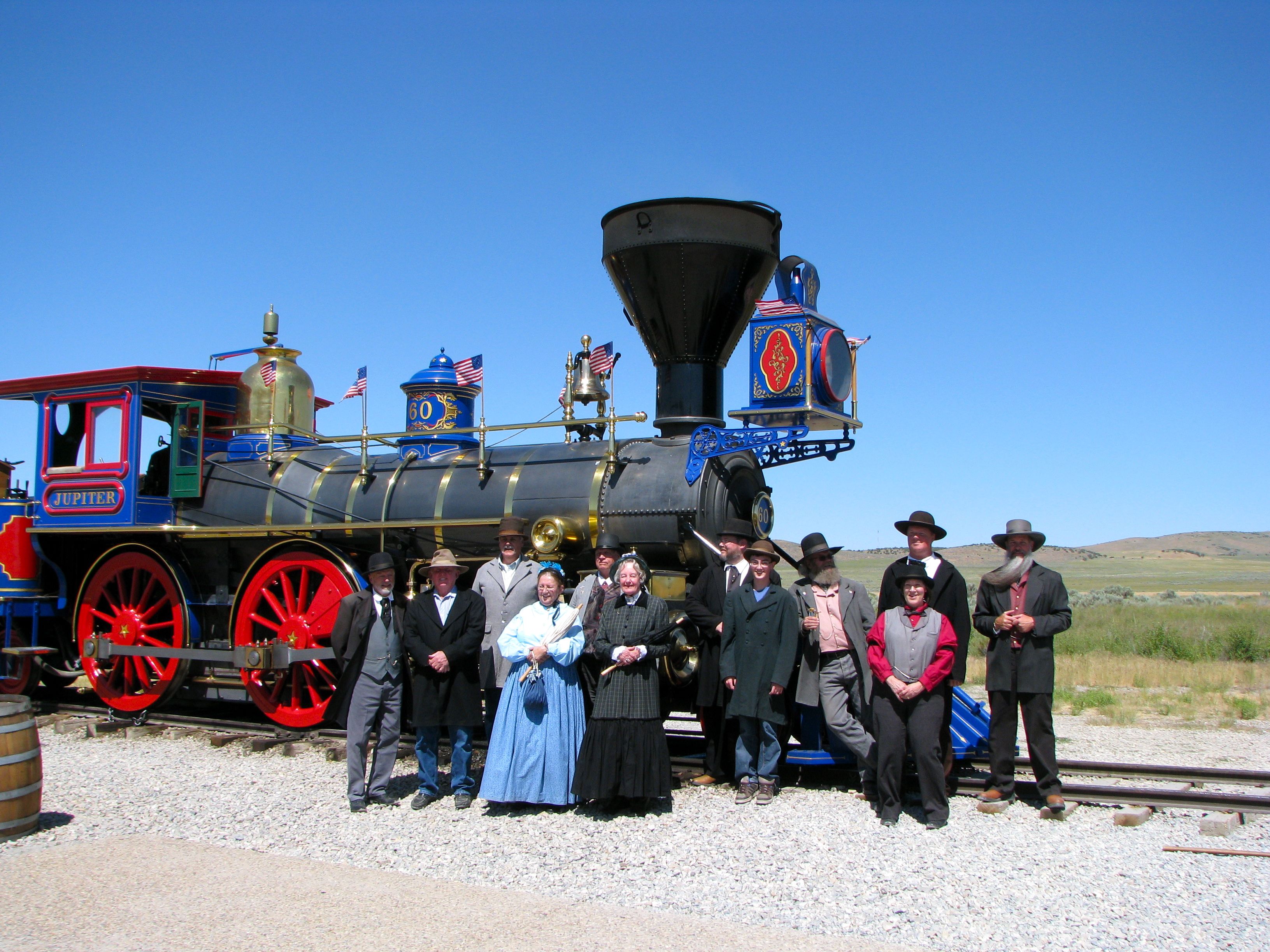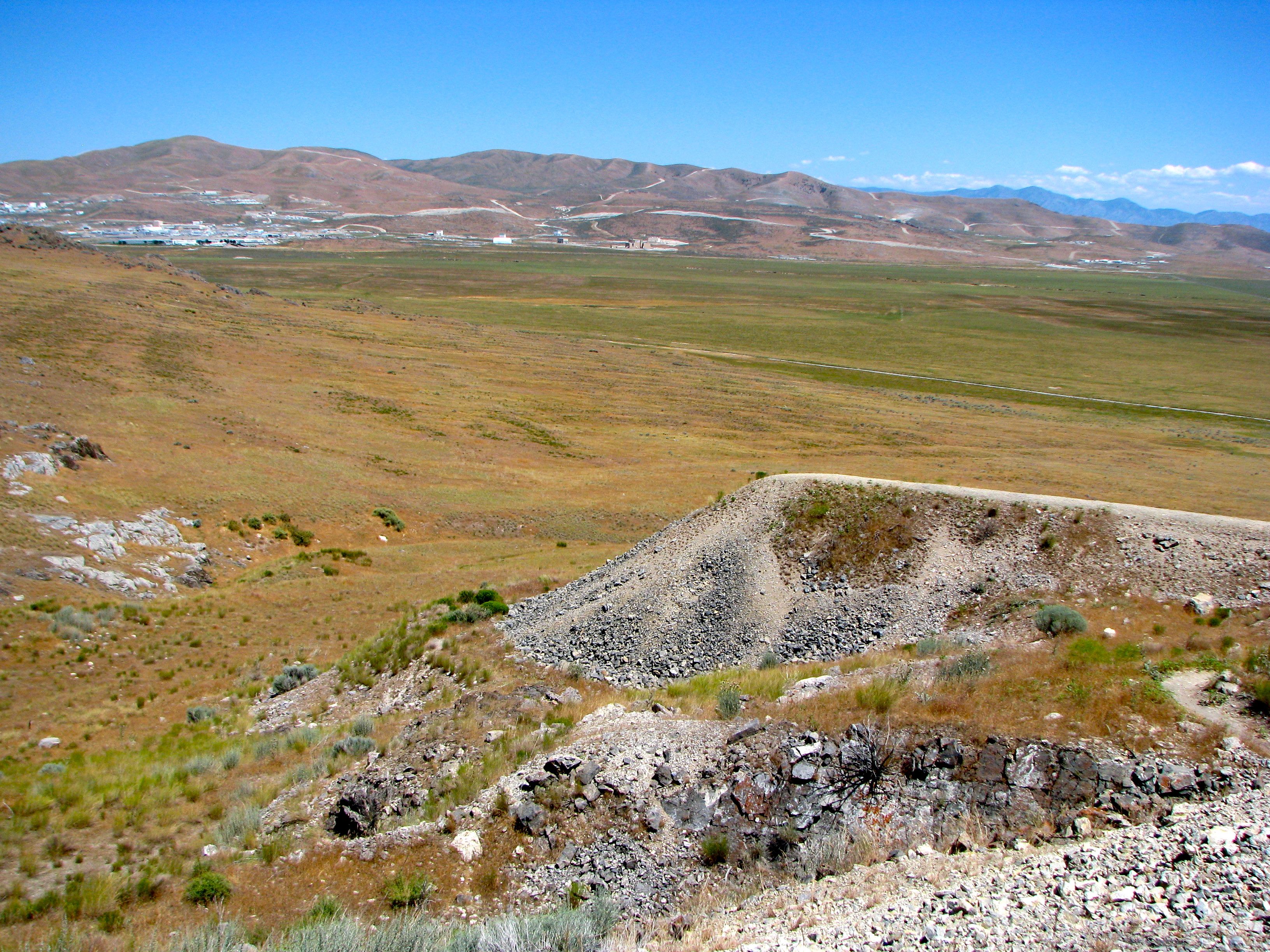Promontory Summit, Utah, USA (July 2011)
Most of us remember the Golden Spike, Promontory, Utah and the completion of the Transcontinental Railroad. They featured prominently in long ago history classes when we were kids.
Now we arrived in northern Utah. There was no doubt that we’d have to stop at the Golden Spike National Historic Site. We drove north out of Ogden on Interstate 15. Then we cut into the desert west of Brigham City and Corinne along Route 83. Next we arrived at the park about twenty miles after leaving the Interstate and after a brief detour to the nearby ATK Rocket Park. The road continued ever deep into the desert. There it climbed towards Promontory Summit at 4,902 feet above sea level before arriving at the visitors center (map).
Indeed, Promontory SUMMIT, not Promontory Point. A history book several generations ago got the name wrong. Everyone else simply repeated the mistake. Promontory Point sits a good forty miles away, due south at the tip of peninsula jutting into the Great Salt Lake. I didn’t know that before our visit so I learned something new that day.
Realizing the Dream

A transcontinental railroad crossing the breadth of the United States and connecting both costs had long been a dream, almost as long as there had been railroads. Congress passed legislation, Pacific Railroad Acts of 1862 and 1864, authorizing construction and operation of the lines. The Government provided huge financial incentives varying by the difficulty of terrain plus ten square miles of land for every mile of track laid. In 1863, the Central Pacific Railroad began from Sacramento, California heading east and the Union Pacific Railroad began building from Omaha, Nebraska heading west. The route would eventually stretch 1,776 miles over mountains, plains, rivers and deserts along the way.
Construction went through many adversities, from the terrain and from the sheer audacity of a massive construction effort through spaces far removed from civilization. The Civil War slowed down early efforts due to a lack of available manpower with efforts redoubling once the conflict ended. Finally the dueling efforts began to converge on a remote sector of Utah although the parties could not agree on an exact spot, hoping to extract every last bit of payment for themselves. Congress finally fixed the point on Promontory Summit and the two lines came within the length of a single rail in May 1869. The Press had followed construction intensely and the completion became a media sensation, broadcast nationwide through a nascent telegraph system extending down the railway.
An Immediate Impact

The last spike in the Overland Route was finally driven and the dream of a transcontinental railroad became reality on May 10, 1869. Hundreds of people gathered at Promontory Summit where the Central Pacific’s Jupiter and Union Pacific’s No. 119 steam engines faced-off. The trains visible at the National Historic Park today are exact reproductions of those fabled machines in the same location where a large crowd gathered in 1869 to witness east and west connect. Officials tapped a ceremonial spike made of gold, an iron spike was then driven, and the frontier began to fade away.
A trip that once took six or more months on foot or oxcart suddenly shrank to a week. Settlers poured onto the rails, creating towns all along the lines, with any easy way to get their crops to market. Resources, ores and minerals, moved from the west to the east to fuel the industrial revolution, while consumer goods moved the opposite direction. Native Americans, however, fared rather more poorly. Their lands trespassed upon, their cultures disrespected, they were forced onto reservations as pioneer populations skyrocketed.
At the Visitors Center

We had a great time visiting during the Summer. There were plenty of activities at the visitors center including lectures led by informative volunteers and periodic re-enactments of the golden spike ceremony. The period garb worn by those portraying the events of 1869 certainly added to the ambiance. The Jupiter and the 119 have been reproduced in exacting detail and are in complete working order, with the steam trains moving into position down the track for the ceremony. I’m not sure how much there would be to see and do out-of-season but there was quite a lot going on when we stopped by in July.
The Rest of the Park

There’s more to do away from the visitors center although few people ventured to the more remote parts of the park. We hiked along the Big Fill Trail and never encountered anyone else in the hour-or-so it took us to complete the trail. This path into the desert offered excellent views of various construction features employed by both railroads. We learned that the railroads began building past each other, preparing overlapping grade for 250 miles, both hoping to lay rail along their grade to maximize their profits. This is readily apparent along the Big Fill Trail where the respective grades were often separated by a few dozen yards.
The photograph above shows the remains of the Union Pacific’s Big Trestle, which ran parallel to the Central Pacific’s Big Fill. The trestle ran for 400 feet and as high as 85 feet above the ravine. The Central Pacific gained control of the segment between Ogden and Promontory Summit a few months after completion, so the big trestle was soon decommissioned.
You can also just barely see the ATK Rocket Park at the upper-left part of the photo, at the base of the mountain.

Leave a Reply